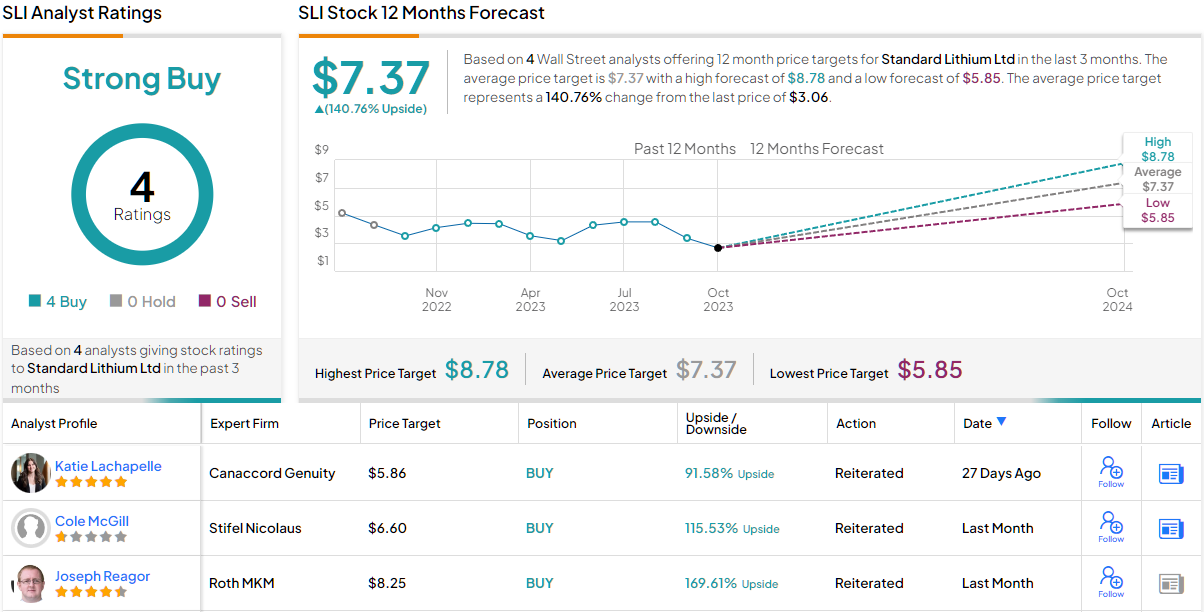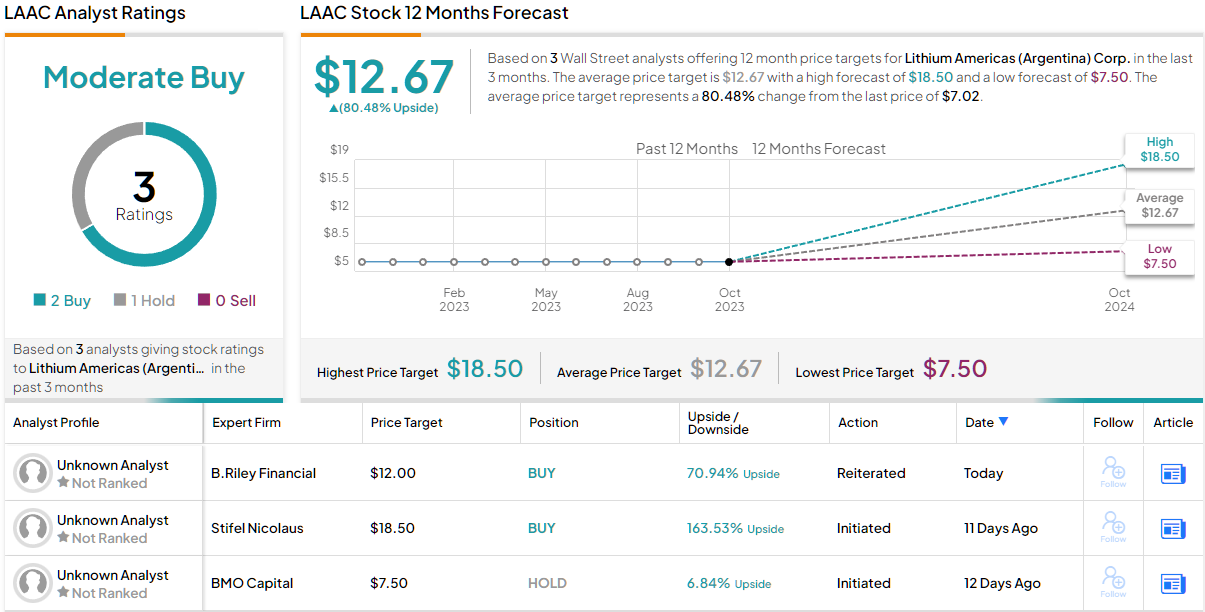The automotive industry is shifting, under a combination of impulses, from internal combustion engines to electrically powered vehicles. There has been much commentary on this shift, on its efficacy and practicality, but we’ll focus here on a factor that most people probably don’t think about: lithium. Lithium-ion batteries are the beating heart of electric vehicles (EVs); Elon Musk has said that ‘lithium batteries are the new oil.’
Elevate Your Investing Strategy:
- Take advantage of TipRanks Premium at 50% off! Unlock powerful investing tools, advanced data, and expert analyst insights to help you invest with confidence.
Musk has been right too often for us to ignore him – and on top of that, his Tesla company is fast-tracking its new lithium refinery on the Texas Gulf coast, a facility that when completed will make Tesla the largest refiner of battery-grade lithium in North America. Musk’s company has committed $365 million to developing the plant, and the planned 2025 production date has now been moved up to the second half of 2024, with the capacity to produce enough battery-grade lithium for 1 million EVs annually.
The market for battery-grade lithium is huge – in addition to EVs, most of our portable electronics, the laptops and tablets and smartphones that we all depend on, use lithium-ion batteries. Musk has noted this, and described his expanding lithium operation in Texas as a ‘money-printing machine.’
A market with that kind of potential is a ripe field for stock investors. Using the latest data from TipRanks, we’ve pinpointed two lithium stocks selling for under $10 per share, which some Wall Street analysts see as potential winners in this expanding field. Let’s find out why.
Standard Lithium (SLI)
The first stock we’ll look at is Standard Lithium, a mining and exploration company currently working in southwestern Arkansas, where it has two lithium mining projects under development. These projects are located in the Smackover formation, an extensive, porous, permeable limestone formation that stretches in an arc from east-central Texas along the Arkansas-Louisiana border, through Mississippi and Alabama, and into the Florida Panhandle. The formation has been known and, at times, exploited for over a century, making Arkansas the world’s second-largest bromine producer. Today, the rich bromine brine deposits in the Smackover are also recognized as commercially viable sources of high-grade lithium.
The existing brine exploitation and production facilities in the southwest Arkansas region give Standard Lithium an advantage in developing the lithium deposits. The company is able to leverage the existing infrastructure and a partnership with the LANXESS chemical company to begin development of the Phase 1A Project, which will build on the existing permitted processing infrastructure belonging to LANXESS to put Standard’s first commercial lithium extraction plant into operation. Feasibility studies were completed in 3Q23, estimating a 5,400 tpa production over 25 years of operations. Standard Lithium expects to make a Final Investment Decision during 1H24, with commercial production targeted to start in 2026.
The company’s second development project is SWA, or Southwest Arkansas. This is a greenfield project located some 15 miles west of the LANXESS Phase 1A development. The company completed a Preliminary Feasibility Study during 3Q23, which indicated potential for a 20-year operating life and production of up to 30,000 tpa of battery-quality lithium hydroxide. The SWA project boasts easy access via a paved highway and the ready availability of regional water, power, gas, and rail infrastructure.
In addition to these two development projects, SLI has been conducting drilling tests elsewhere in the Smackover formation to locate additional commercial-grade lithium deposits. The company announced earlier this month that test drilling in East Texas had yielded the highest confirmed grade of lithium brine in North America.
Standard Lithium has scored fans within the analyst community. Among them is Roth Capital analyst Joseph Reagor, who rates the stock a Buy, while his $8.25 price target implies a one-year upside of a robust 167%. (To watch Reagor’s track record, click here)
Backing his stance, the analyst writes: “For Phase 1A of the LANXESS project, we estimate an NPV of $375 million at a selling price of $25,000 per tonne of lithium carbonate. We then assign 100% of the project to SLI at a 0.6x NPV multiple resulting in a valuation of $225 million. For the remaining LANXESS project, we assume LANXESS participates for 49% of the project and that the project has an NPV of $1.34 billion at $25,000 per tonne LCE. We apply a multiple of 0.20x to SLI’s 51% share of this project as we believe it is likely to be developed later. This results in a value to SLI of $136.9 million. For the SWA project, we estimate an NPV of $2.3 billion based on a selling price of $25,000 per tonne. We assign a multiple of 0.5x of the NPV of this project or $1.15 billion. Combining these valuations and adjusting for net cash of USD$67.4 million, we arrive at a total value of $1.5 billion or $8.23 per fully diluted share. We round this up to reach our $8.25 price target.”
Overall, this small lithium mining stock has 4 recent analyst reviews, all positive – giving the shares a unanimous Strong Buy consensus rating. SLI is currently trading for $3.06 and its $7.37 average price target suggests a 12-month gain of 140% in store ahead. (See SLI stock forecast)
Lithium Americas (Argentina) (LAAC)
The second stock we’ll look at is Lithium Argentina, a subsidiary of the original Lithium Americas. Founded in 2009, Lithium Americas located and began development in commercial-grade lithium deposits in the Western Hemisphere. Earlier this year, the company underwent a split into two independent firms, Lithium Americas (NewCo) and Lithium Americas (Argentina). This move was made to allow the separated firms to focus on their respective areas of operations. The split was completed on October 3 of this year.
Lithium Argentina inherited both existing and potential lithium development and production projects in its namesake country. Currently, it has three lithium projects either online or in development. The largest, Caucharí-Olaroz, is 44.8% owned by Lithium Argentina and is the largest greenfield lithium brine asset to come online in over 20 years. The project is located in Argentina’s Jujuy Province and operates through evaporation ponds and processing. The first stage of the project has an operating capacity of 40,000 tpa, and the Stage 2 expansion is projected to add 20,000 tpa.
The company’s two other projects, Pastos Grandes and Sal de la Puna, are still in development. Pastos, which is wholly owned by Lithium Argentina, is at the feasibility stage, has its permits, and is advancing its $30 million development plan to start production. Sal de la Puna is 65% owned by Lithium Argentina, with a Chinese partner, and is at the pre-feasibility stage. These two projects are located about 15 kilometers apart from each other and approximately 100 kilometers south of Caucharí-Olaroz.
The strong array of projects, both on-line and in development, bodes well for Lithium Argentina’s future, especially in the view of Stifel’s Cole McGill, who writes, “Our proprietary bottom-up lithium supply and demand model suggests a balanced market through 2024 (~1.1MMt LCE), with a deficit ranging between 450-900kt by 2030 (50-100% of current market size), driven by a global EV adoption rate of 38% (54% China, 50% Europe, 40% USA), which compares conservatively to government targets. LAAC’s scalable business strategy has line of site to supply lithium for over 1MM EVs annually prior to further acquisitions.”
The analyst goes on to outline how Lithium Argentina’s projects put it in the running to become an important player in the world lithium market: “With interests in the now-producing Cauchari-Olaroz (44.8%), and growth projects at Pastos Grandes (100%) and adjacent Sal de la Puna (65%), we believe the company has runway to become a producer of globally significant scale.”
In McGill’s opinion, all of this justifies a Buy rating, and his $18.50 target price on the stock indicates his confidence in a strong 164% upside on the one-year horizon. (To watch McGill’s track record, click here)
Overall, this stock has a Moderate Buy rating from the Street’s analysts, based on 3 recent analyst reviews that include 2 Buys and 1 Hold. The stock is currently selling for $7.02 and its $12.67 average price target implies it will appreciate 80% over the next year. (See LAAC stock forecast)
To find good ideas for stocks trading at attractive valuations, visit TipRanks’ Best Stocks to Buy, a tool that unites all of TipRanks’ equity insights.
Disclaimer: The opinions expressed in this article are solely those of the featured analysts. The content is intended to be used for informational purposes only. It is very important to do your own analysis before making any investment.



















